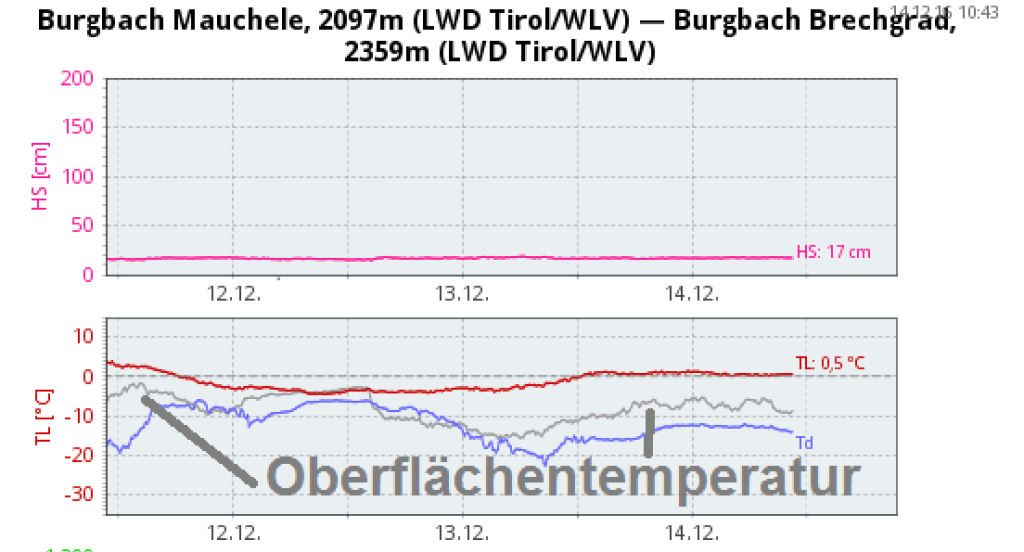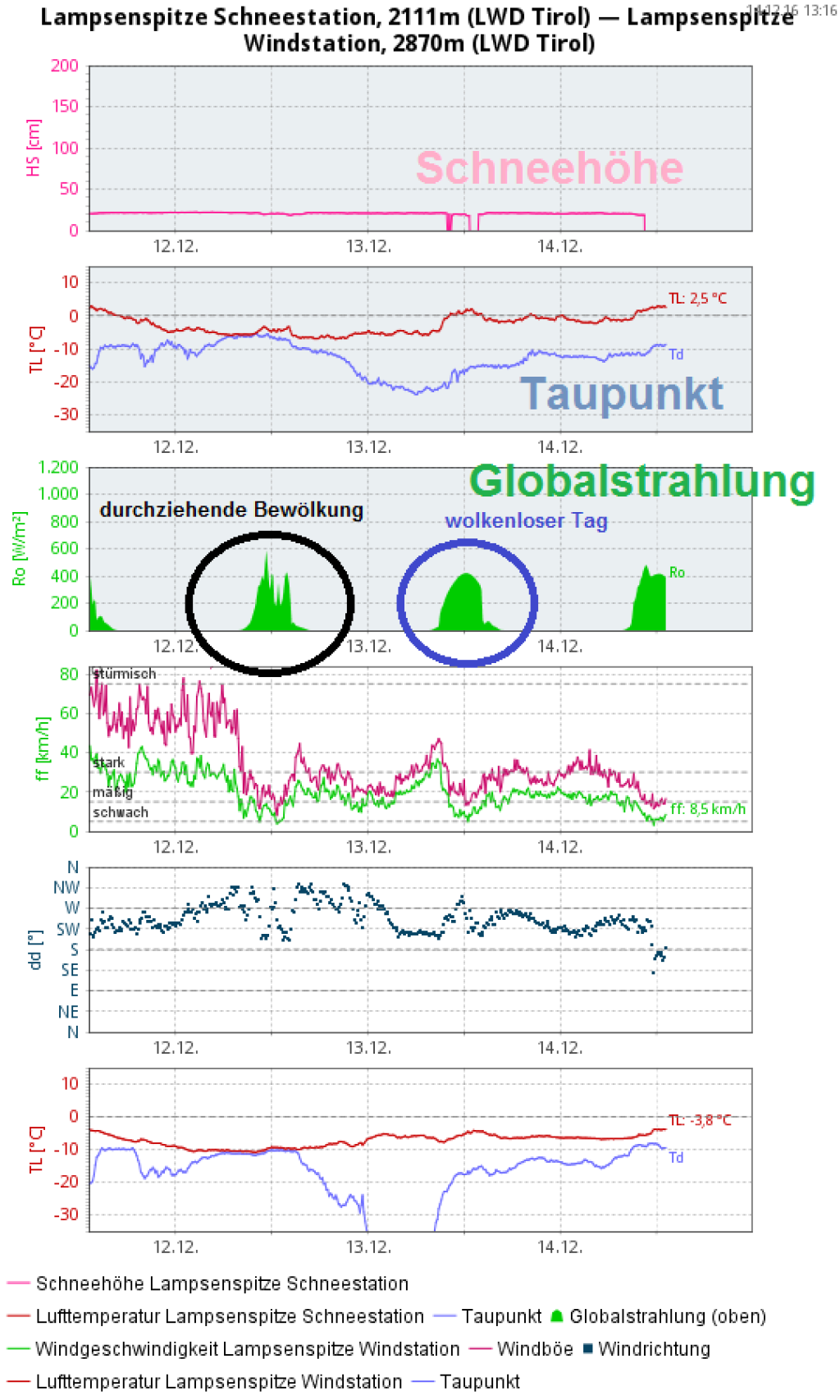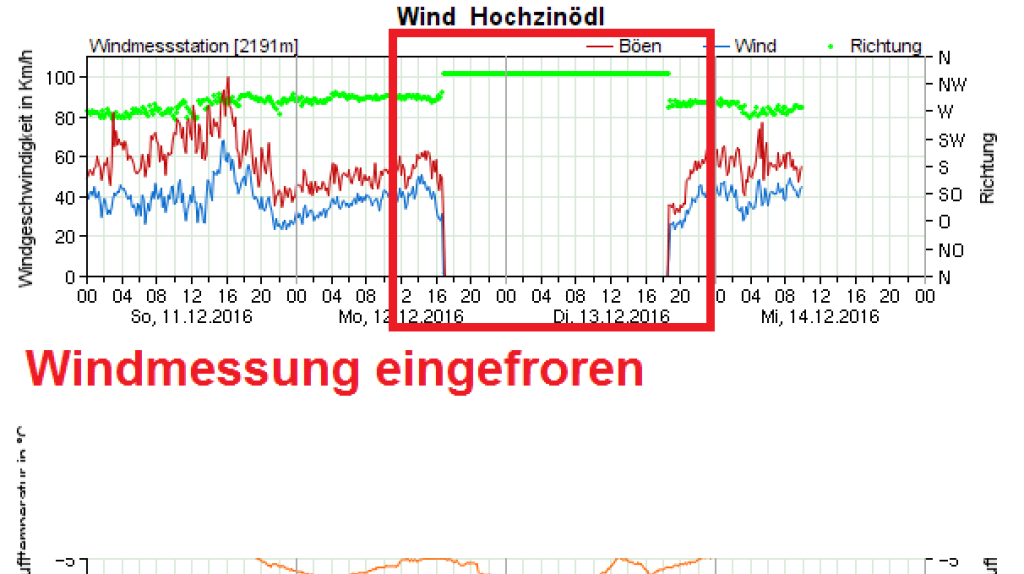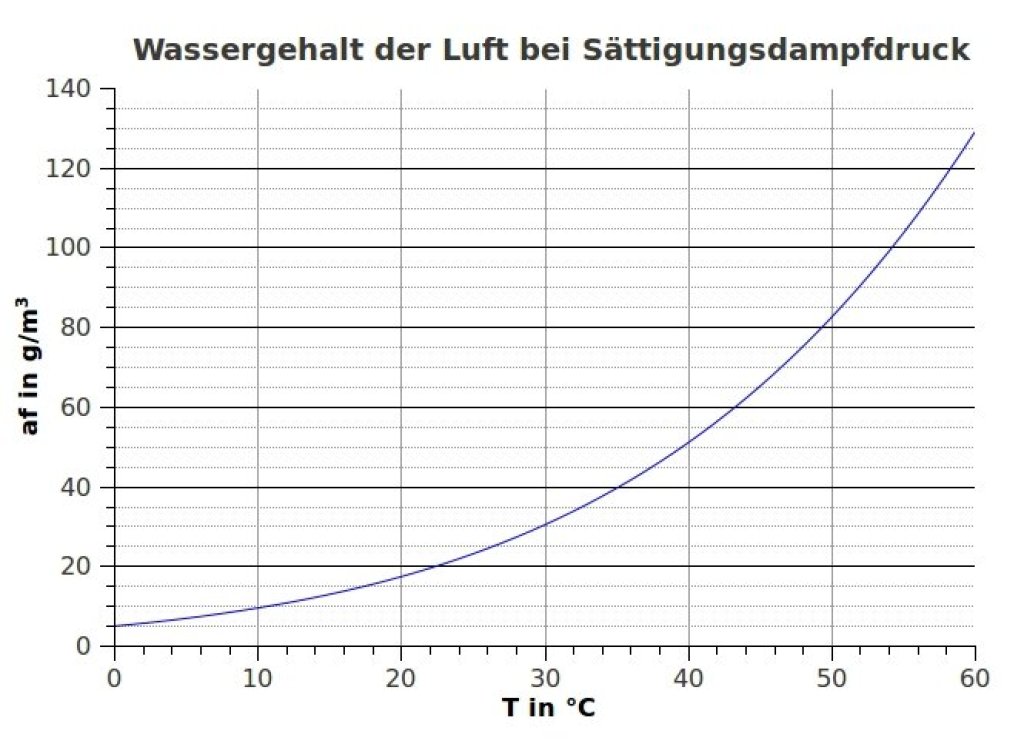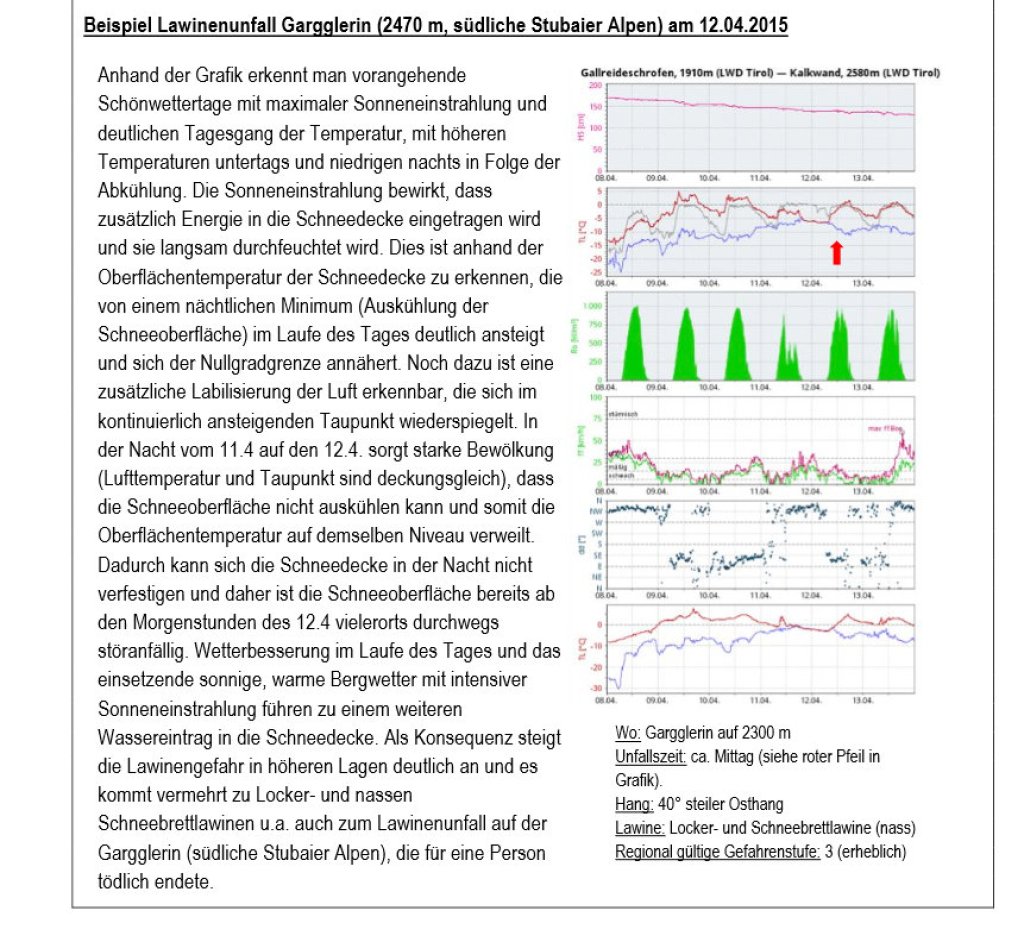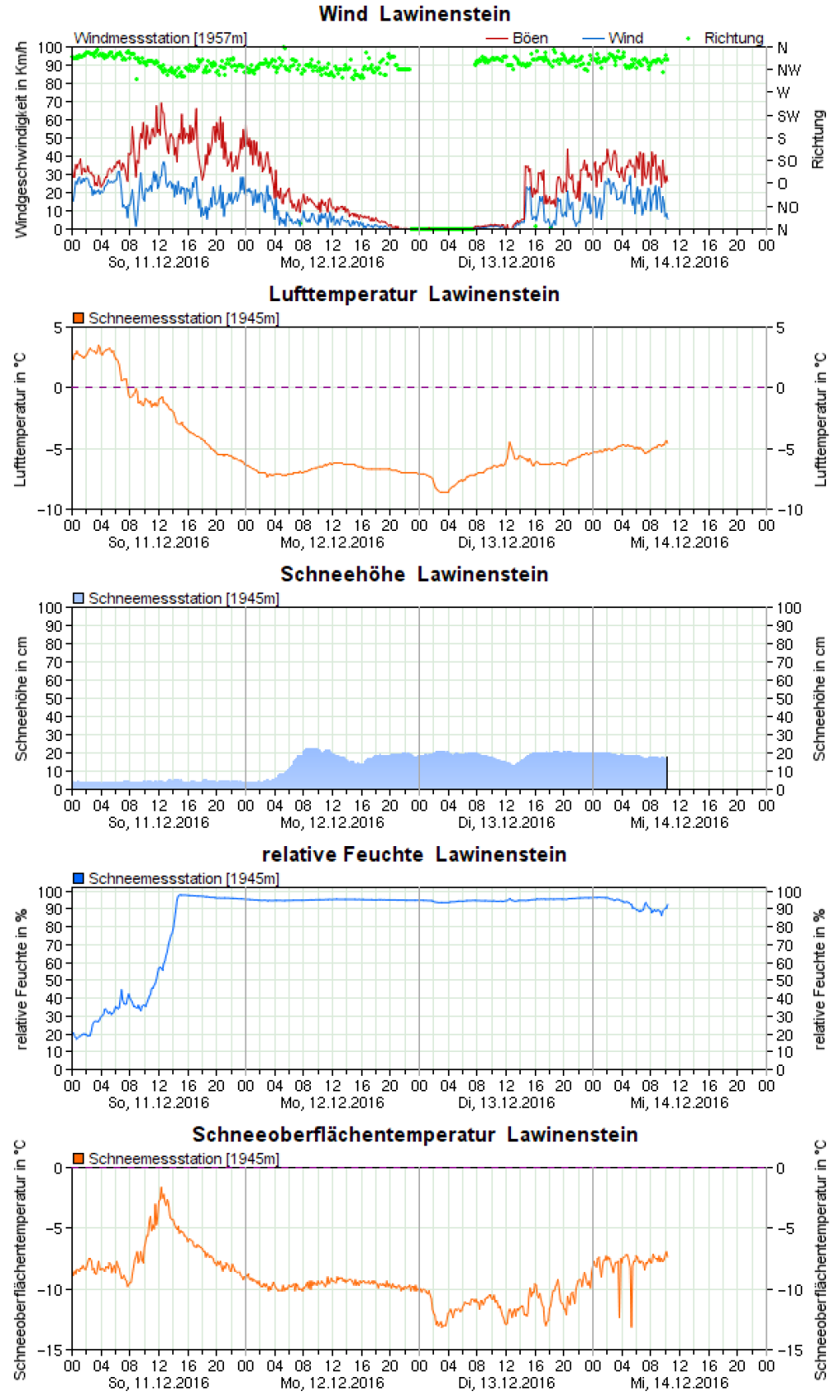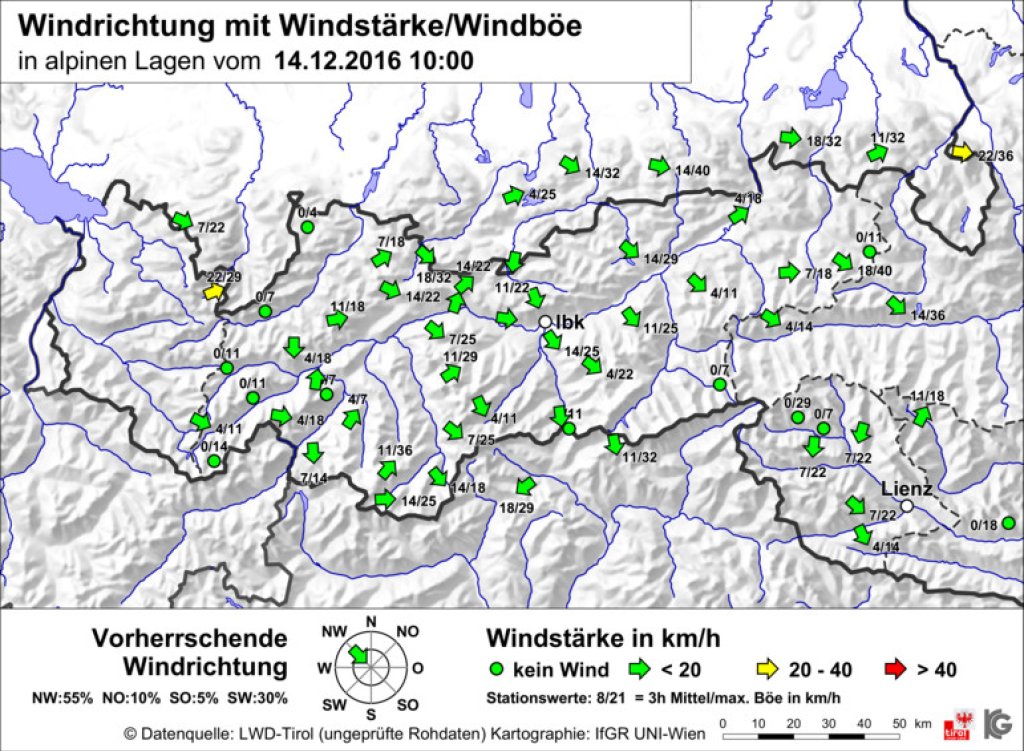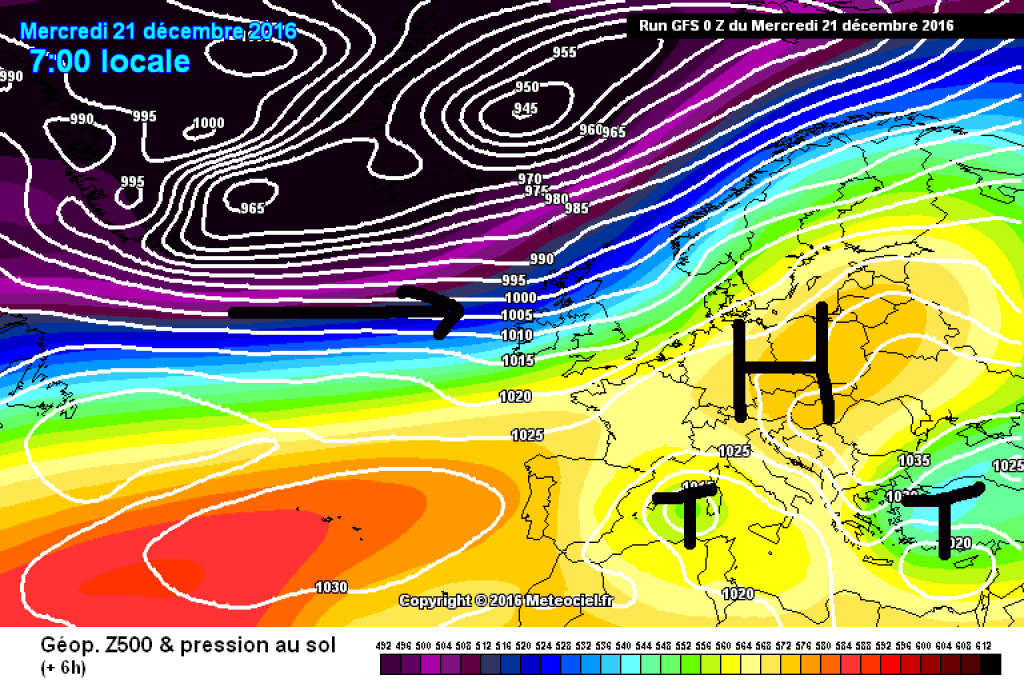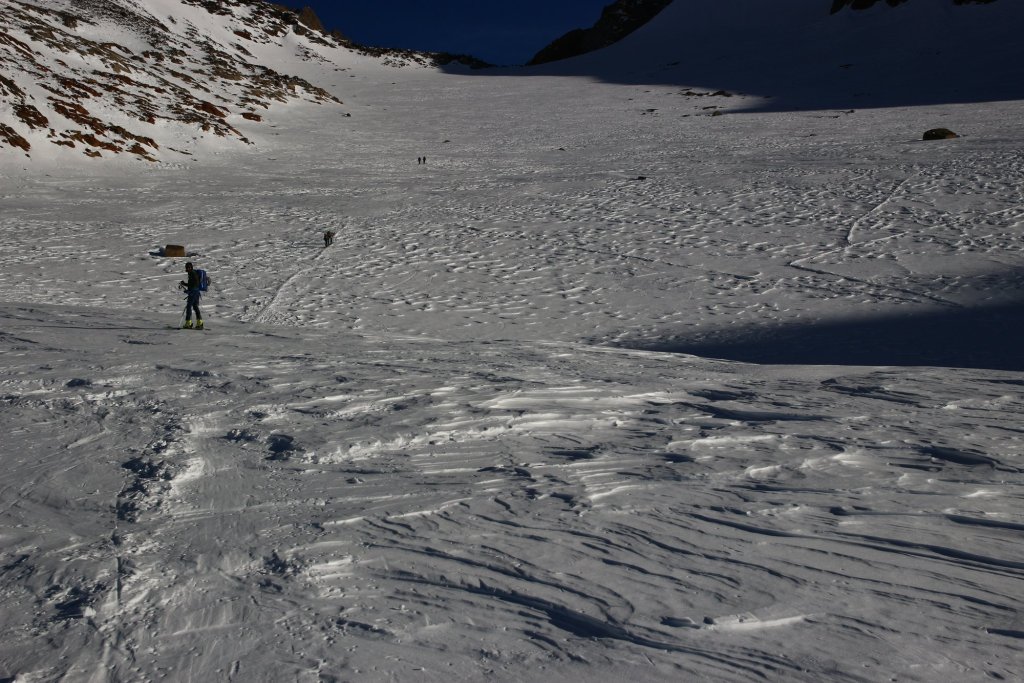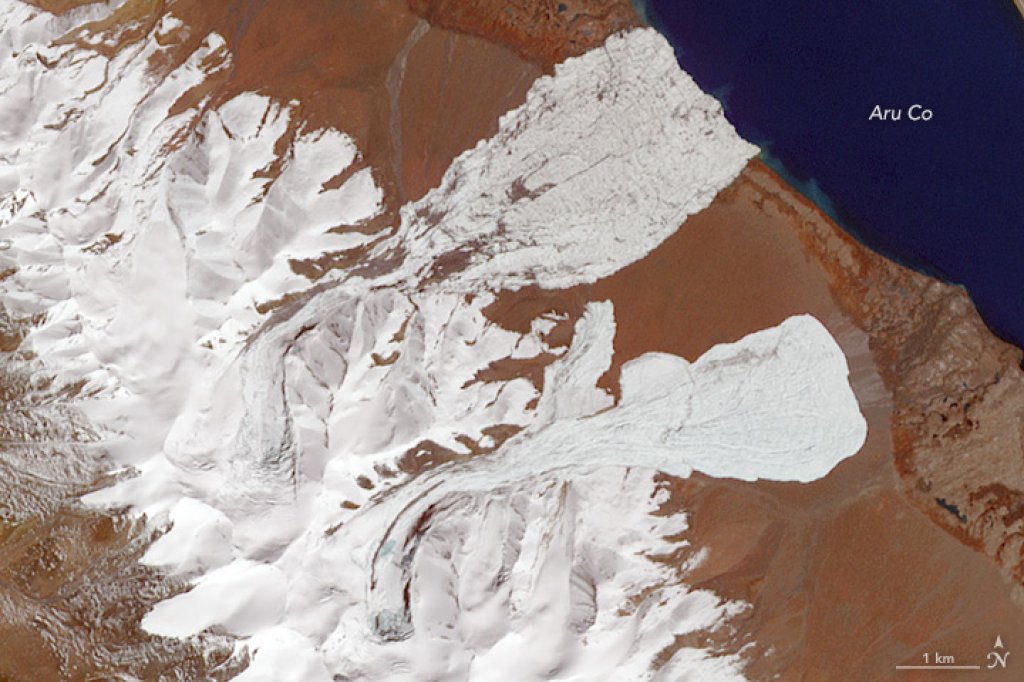Measuring stations - basics
There are many different types of measuring stations and techniques in the mountains. The avalanche warning services in the Alpine region make most of the station data available online. The most important parameters here are air temperature, dew point or relative humidity, wind strength and direction, snow depth and the amount of fresh snow. In addition, the surface temperature, global radiation, albedo, air pressure and snow temperature are sometimes measured at different heights within the snow cover. There is often a snow station below ridge and summit level and a wind station higher up at a station location. In most cases, all other parameters are also measured by both stations. The cost of setting up a new station for a site is always in the five-figure euro range. In addition, maintenance and servicing can be quite costly. It is relatively common for instruments to be damaged by external influences and have to be repaired or replaced. In the vast majority of cases, data is transmitted via the GSM network, i.e. via the infrastructure of a mobile phone company, and this adds further costs. Stations that are located outside the cell phone network cannot transmit their data to the servers on a regular basis and are therefore generally not visible online. A healthy degree of skepticism is extremely important when personally analyzing station data and graphs. This is so-called unchecked raw data that has not been checked or corrected. This means that if a measuring instrument provides incorrect data - which is not that rare - it will be passed on in the same way.
